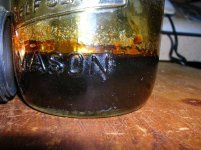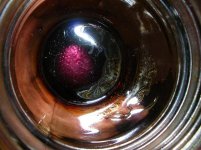Hey Guys,
Was toying around with making some red oil. Wanted to think through my process and get some feedback.
1. Going to use hexane on starting material. 15 to 1 solvent ratio seems to be an industry standard in the oil extraction business.
2. on a magnetic stirring hotplate heat solvent at 45C for 180 mins stirring at 90 rpm
3. Filter out remaining solids
4. Evaporate hexane using a rotary evaporator
5. on a magnetic stirring hotplate dissolve material into ethanol (3 to 1 solvent ratio) and heat at 55C for 180 mins stirring at 90rpm
6.place material into speration funnel and place in freezer for minimum 4 hours to allow waxes to solidify
7. Drain off procduct and discard waxes
8. Evaporate ethanol in rotary evaporator
9. Enjoy
Now first question is should I use dry, grinded shake as a starting feedstock, or should I turn into bubble hash and use that instead.
Thoughts??
Was toying around with making some red oil. Wanted to think through my process and get some feedback.
1. Going to use hexane on starting material. 15 to 1 solvent ratio seems to be an industry standard in the oil extraction business.
2. on a magnetic stirring hotplate heat solvent at 45C for 180 mins stirring at 90 rpm
3. Filter out remaining solids
4. Evaporate hexane using a rotary evaporator
5. on a magnetic stirring hotplate dissolve material into ethanol (3 to 1 solvent ratio) and heat at 55C for 180 mins stirring at 90rpm
6.place material into speration funnel and place in freezer for minimum 4 hours to allow waxes to solidify
7. Drain off procduct and discard waxes
8. Evaporate ethanol in rotary evaporator
9. Enjoy
Now first question is should I use dry, grinded shake as a starting feedstock, or should I turn into bubble hash and use that instead.
Thoughts??






